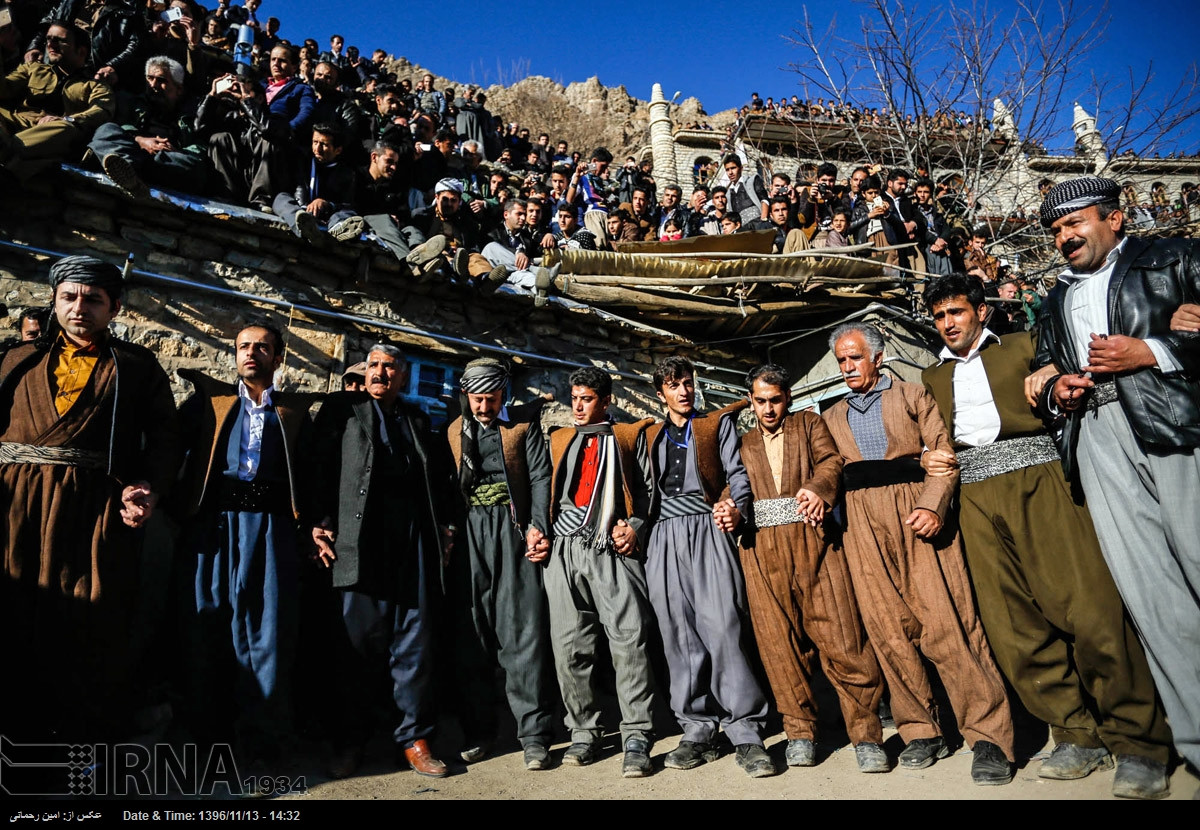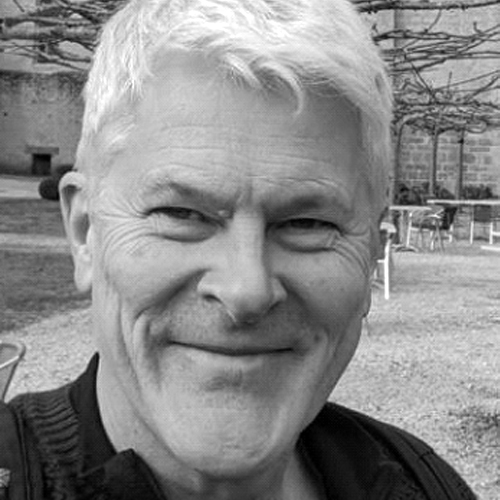- Home
- Pir Shalyar – A Remarkable Festival in the Glorious Village of Howraman Takht
Pir Shalyar – A Remarkable Festival in the Glorious Village of Howraman Takht
Hair flies wildly as dervishes perform trance-like ‘dances’ on the rooftops of a spectacular Kurdish stepped village. Welcome to Howraman Takht’s Pir Shalyar Festival in far western Iran.

Howraman’s most celebrated festival replays the legendary wedding of a hermit-healer. Image: IRNA
The oversized village of Howraman Takht in Western Iran is an architectural work of art with its earthen-coloured houses stacked almost organically up the side of a craggy hillside. They would be perfectly camouflaged against the dusty mountains were it not for arrays of blue- and green-shuttered windows staring out across the valley like hundreds of eyes. The slope is so steep that the roof of one house often forms the front yard for the house above. In this, it resembles the famous Gilani village of Masuleh in lush northwestern Iran, but unlike the latter, there is virtually no tourism here.
The stacked houses of Howraman Takht have a collective stylistic integrity. Image: Aras Hatam/Shutterstock
Yet the whole of the Howraman area is sprinkled with similarly memorable settlements - Takht simply means ‘head’ or main village. Culturally it’s hard to find anywhere in the world that’s more authentically Kurdish.
Image: burakguralp/Shutterstock
While most Kurds fall into one of two main linguistic sub-groups, i.e. Kurmanji and Sorani speakers, Howraman is home to the Hawrami people – part of the third, lesser-known subgroup, Gorani. Hawrami is considered the most ancient dialect, and it’s sometimes regarded as the classic literary language for Kurds in general, especially in poetry.
Given all this, it’s hardly surprising that the ‘Cultural Landscape’ of Howraman Valleys (also known as Uramanat or Avroman) has been listed by UNESCO as a World Heritage Site, albeit only since July 2021[1].
A map showing the area covered by UNESCO World Heritage status. Howraman Takht is in the northwestern part of the ‘central’ valley. Image: Wikimedia Commons
As you’ll find throughout much of this part of Iran’s Kordestan province[2], local men very often wear the typical Kurdish chokho-ranak suits with the super-baggy shalwar trousers and a pshten (cummerbund). Some also wear turban caps.
Image: Athikhom Saengchai/Shutterstock
More specific to Howrami gents, however, is an archetypal winter waistcoat: the utterly distinctive faranji. Also known as a ‘kulabal’ (meaning short-sleeved), these come with eccentric shoulder extensions that create the impression of horns.
In cooler weather, you’ll often find older Hawrami gentlemen wearing ‘horned’ faranji felt waistcoats.
Faranji are typically made from rolled felt whose wool comes from the marghoz goat, a cross between Angora and a local Kurdish breed. You might assume that these costumes are something now relegated to an ethnographic museum or found only on anthropological films. However, as this author will personally attest, on a random winter’s day, one can find plenty of older gentlemen happily wandering around the area wearing the full traditional gear. And during the Pir Shalyar events, you can expect many more.
The Pir Shalyar ‘wedding’ is one of Iran’s most mesmerizing annual festivals. The most visually striking feature is a Sufi dhikr ceremony watched by great crowds of people (almost exclusively men) crammed precariously onto the layered rooftops.
The audience gathers for the Pir Shalyar ‘wedding’. Image: IRNA
Another rooftop acts as de facto ‘stage’ where several percussionists beat the daf (a local form of large tambourine), and a chant leader rhythmically recites holy phrases.
Meanwhile, a line or circle of other men work themselves into a semi-trance, arms linked and together intoning keywords, most often the name of God – “Allah, Allah, Allah.” All the while, they bow rapidly up and down, some dervishes flexing with such force that their long hair flows wildly.
Image: IRNA
The festival has roots dating back at least 1000 years, and despite its Muslim overlay, it’s believed to have pre-Islamic roots. Travel guide publisher, Lonely Planet, even suggests that some elements might be ‘Mithraic’ in origin and possibly contain cultural relics of pre-Zoroastrian ‘angel’ worship. More commonly, it’s thought to be a fusion of Zoroastrian and Islamic ideas based around the legend of a legendary hermit whose reputation as a healer spread far and wide. As far, in fact, as Bukhara in what’s now Uzbekistan. There a king had a beautiful daughter who was a deaf-mute who nobody could cure. Until that is, she was sent – along with a large entourage – to Howraman, where Pir Shalyar performed a miraculous healing. To honour him, the grateful father then offered Pir Shalyar his daughter’s hand in marriage – something that the hermit neither sought nor could afford since the cost of the wedding would have been colossal and he was a penniless mendicant. However, the whole region chipped in to create a celebration that has been remembered ever since. Or so the story goes. There are numerous versions.
Image: IRNA
With large numbers of people descending on the village, which has fairly minimal commerce of its own, tag-teams of helpers prepare and constantly stir vast cauldrons of stew. It is made on wood fires from the meat of sheep and cattle that have been freshly sacrificed outside the modest shrine that’s supposedly the former hovel of the saint. All around that area, rocks and trees are adorned with colourful votive strips of cloth left by pilgrims.
Image: theonearmedcrab
Though the festival has several elements, the main “wedding” ceremony usually takes place over three days at the end of January. The exact dates vary annually: weather is a major factor as heavy snow can make organizing the event impractical.
Image: IRNA
Even if you can’t visit for the Pir Shalyar ceremonies, Horwaman Takht remains fascinating at any time of year.
Image: Elena Odareeva/Shutterstock
And in March, the town hosts its own distinctive version of Nowruz.
Nowruz Celebration in Howraman is also a memorable event © Aryan Nasrollahi. Image: IRNA
[1] It’s Iran’s 26th World Heritage Site - the application for UNESCO status was first lodged back in 2007.
[2] as well as across the nearby Iraqi border
Read this next






